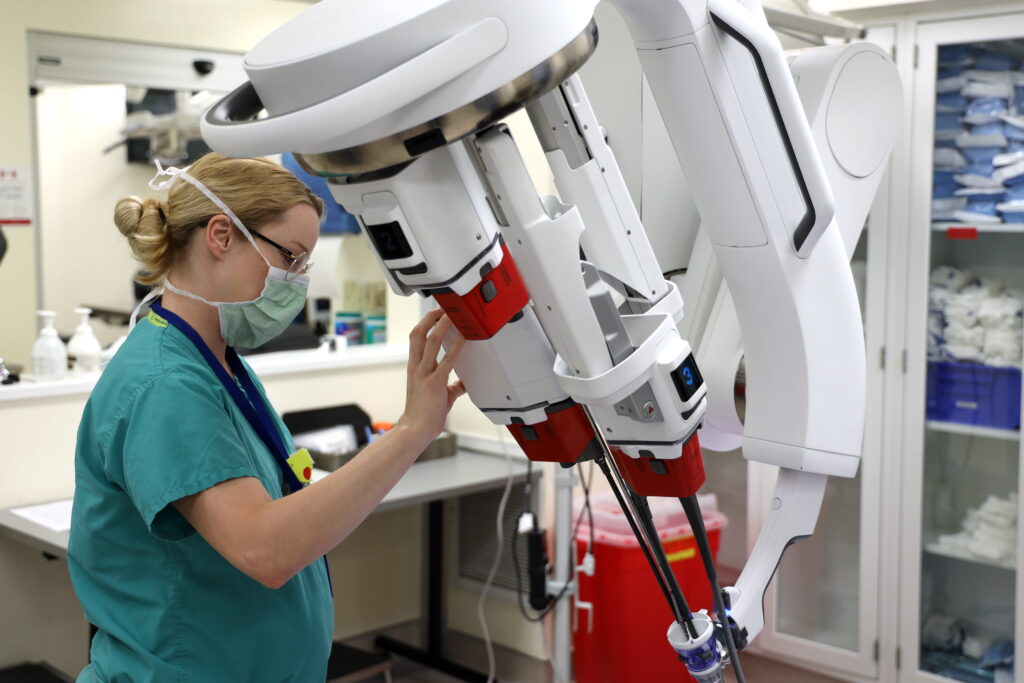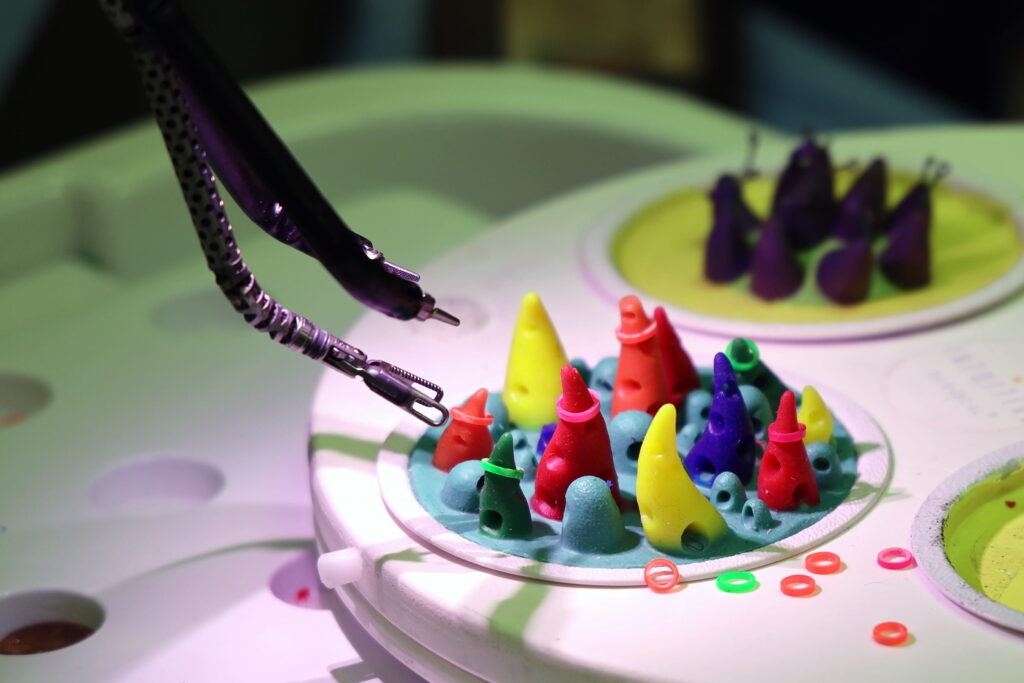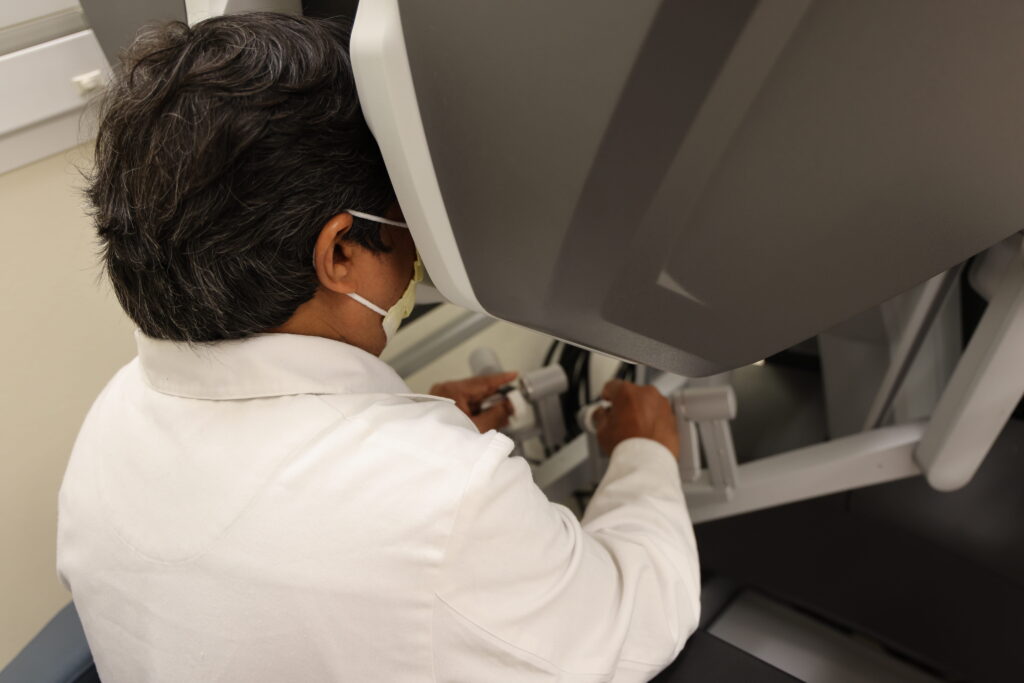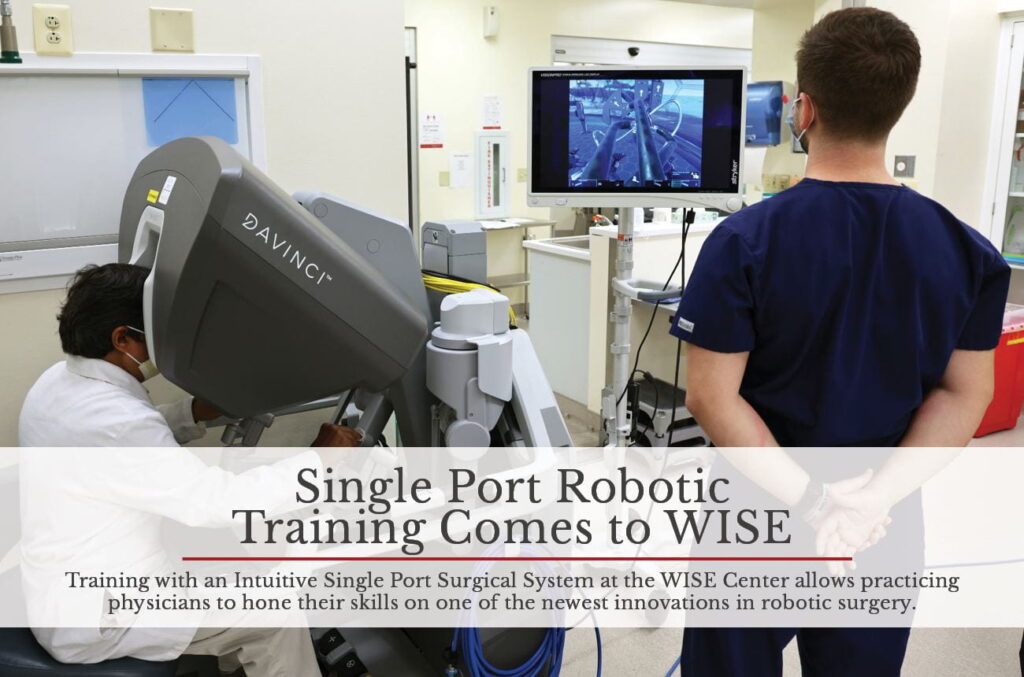Robotic surgery is introducing opportunities for improved patient care. Similar to laparoscopic operations, robotic surgery uses smaller incisions than traditional open surgery, and a camera inside one of these incisions allows the surgeon to see the targeted anatomy. Smaller incisions typically mean fewer complications, a shorter hospital stay and a much faster recovery.
Michael Awad, MD, PhD, Associate Professor of Minimally Invasive Surgery at Washington University School of Medicine in St. Louis, notes that one goal of minimally invasive surgery is to perform procedures through as few and as small of incisions as possible. “The holy grail of minimally invasive surgery,” Awad says, “would be to operate through a single small incision.”
Now, with the development of new technology from Intuitive Surgical, that goal is becoming more realistic. The Single Port (SP) Surgical System is like other robots—it has a camera and three instruments—but all of these components fit through a single incision. Once inside, the instruments can splay out, allowing for the triangulation and traction a surgeon needs for robotic surgery.
This July, Intuitive Surgical brought an SP Robot to the Washington University Institute for Surgical Education (WISE) Center for a week of training.
This training with the SP Robot was a unique opportunity for surgeons and residents at the School of Medicine. The surgical system is still very new (the da Vinci SP System was released in 2019, and the School of Medicine acquired its first SP Robot later that year), and not many hospitals have fully incorporated the technology yet. For training purposes, Intuitive Surgical sent the WISE Center what is called a mobile unit.
“A mobile unit is a full-fledged robot that’s not for clinical use, but specifically for training,” Awad, who is Director of the WISE Center, says. Because the technology is still so new, there are very few of these mobile units, making this training opportunity especially valuable.
“Our ability to bring this training robot to our own institution is truly novel,” says Jeffrey Blatnik, MD, Assistant Professor of Surgery and Director of Surgical Programs at WISE. “For busy surgeons, during the COVID era of travel restrictions, the value of this in-house training at the School of Medicine is tremendous.”
WISE opened the doors of its 4,000 square-foot training facility in the Clinical Sciences Research Building to trainees interested in practicing on this new and exciting system. The arrival of the SP Robot coincided with WISE’s reopening for in-person training this July, after closing temporarily due to COVID-19 restrictions. In the last year, the WISE Center held more than 700 events for over 4,000 trainees. Awad, Blatnik and the rest of the WISE staff were eager to safely reopen and continue offering exceptional training in the American College of Surgeons Level-1 Accredited Educational Institute.
Continually Learning
Primarily, this training was for practicing physicians. The WISE Center, which offers skills labs, high- and low-fidelity simulators and certification testing, is for a wide range of trainees, including residents, fellows, faculty and allied health professionals.
Ramakrishna Venkatesh, MD, Professor of Urologic Surgery, was one of these faculty trainees. Venkatesh, who specializes in minimally invasive and robotic urological techniques and the treatment of kidney stone disease, prostate cancer, renal cancer and urolithiasis, attended the SP training for the opportunity to practice robotic techniques outside of the operating room.
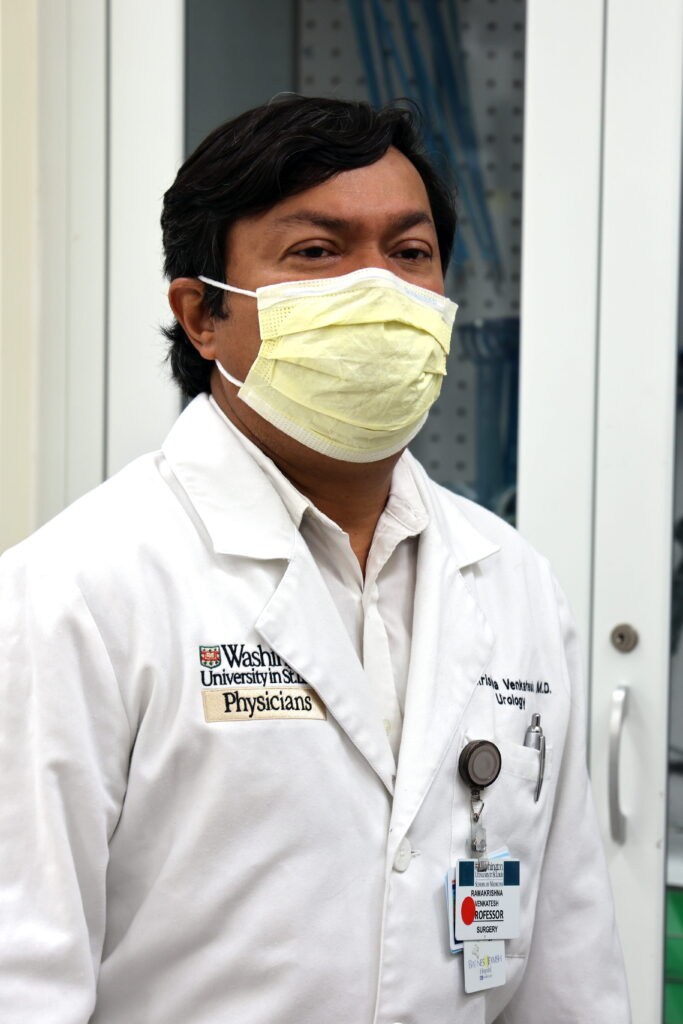
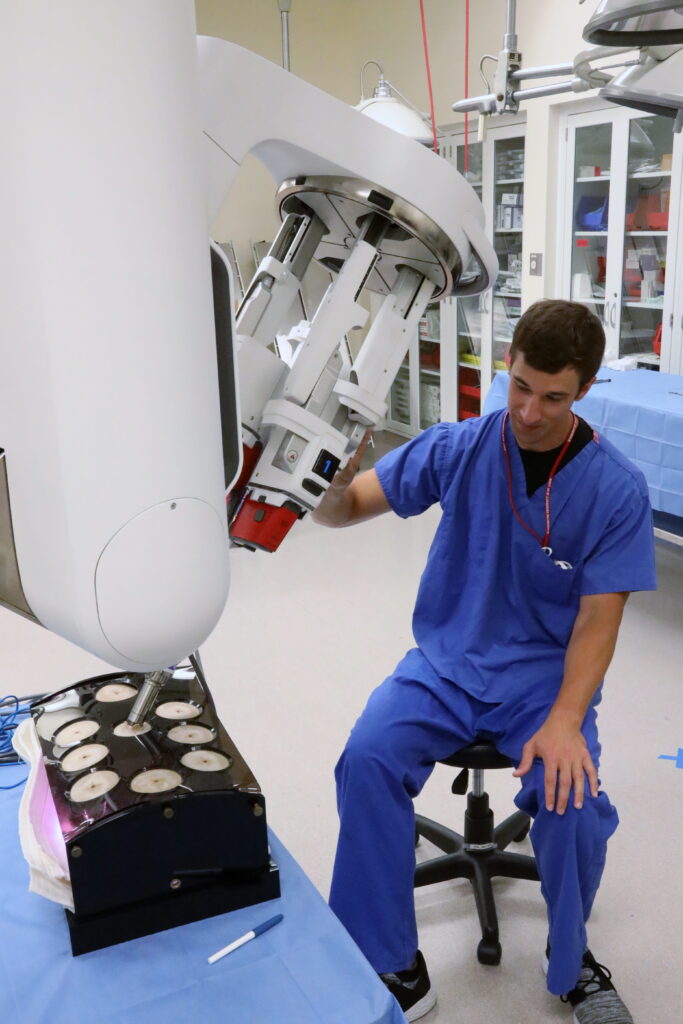
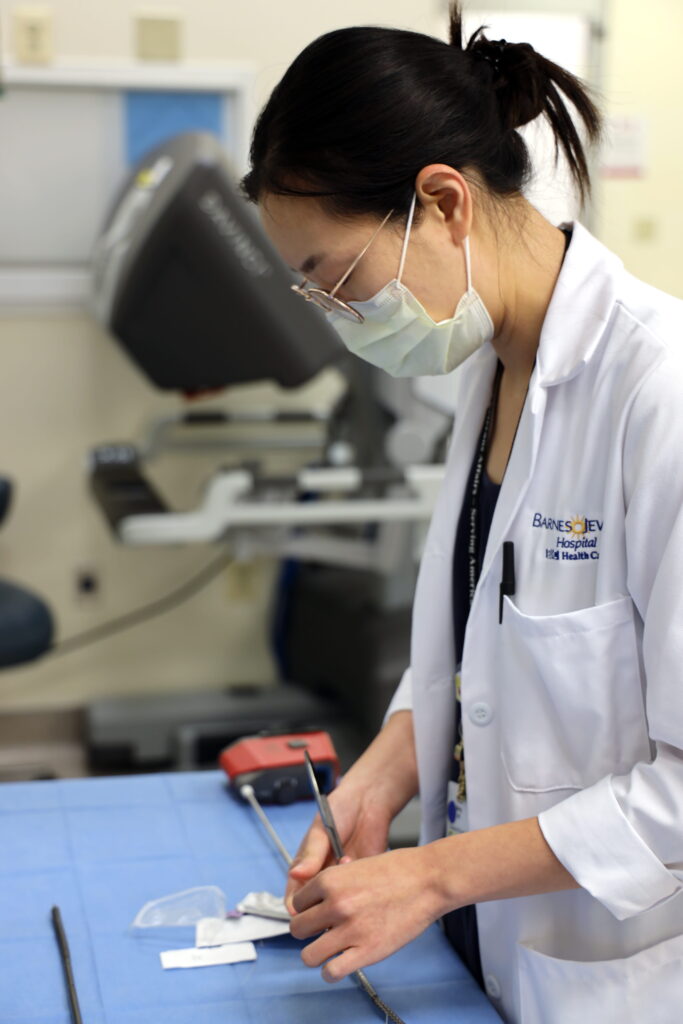
“Simulation learning experiences are a critical aspect of our training as surgeons,” Venkatesh says. “We want to support our residents and be sure they are the best prepared to offer exceptional patient care. The simulation experiences available at WISE allow us to do just that.”
Residents from the Urology Residency Program joined Venkatesh and other faculty in the week of training. Currently, the SP Robot has numerous applications in urology. Surgeons in the Division of Urologic Surgery use the SP to treat kidney and prostate problems, as well as bladder and prostate cancer. The chance for residents to practice these same skills—as Yifan Meng, MD, PGY-4 Urology Resident, and Grant Henning, MD, PGY-3 Urology Resident, attest—is one of the benefits of training at a U.S. News & World Report top 10 medical school.
Outside of urology, the SP Robot can be used transorally to reach anatomy in the back of the mouth and pharynx, and more uses for this new system are in development.
As new techniques become available, physicians at the School of Medicine will have access to the training they need to use Intuitive Surgical Systems. The WISE Center is now an official Intuitive Surgical Training Center, meaning that they can offer certification training for the use of Intuitive Surgical Systems.
The SP System is not yet cleared for colorectal surgery, but Awad and Blatnik look forward to future applications of this technology.
“There is potential to use the robot transrectally to reach low rectal lesions,” Awad says.
Blatnik, who specializes in surgical repair of abdominal wall hernias, believes that the SP Surgical System will lead to new opportunities for patient care in General Surgery. While the instruments are limited in how far they can reach inside the body, Blatnik expects future innovations to lead to even more uses for the SP.
“Ultimately, I think this is the next iteration to having a truly flexible robotic system for colonoscopy and endoscopy,” Blatnik says. “All new technology goes through iterations of improvement. What excites me the most is where this technology will lead.”
Anticipating the future of robotic surgery, faculty from across the Department of Surgery joined in this training. Practicing physicians, including Baddr Shakhsheer, MD, Assistant Professor of Surgery and pediatric surgeon at the Pediatric Colorectal Center, utilize training at the WISE Center to hone and perfect their skills.
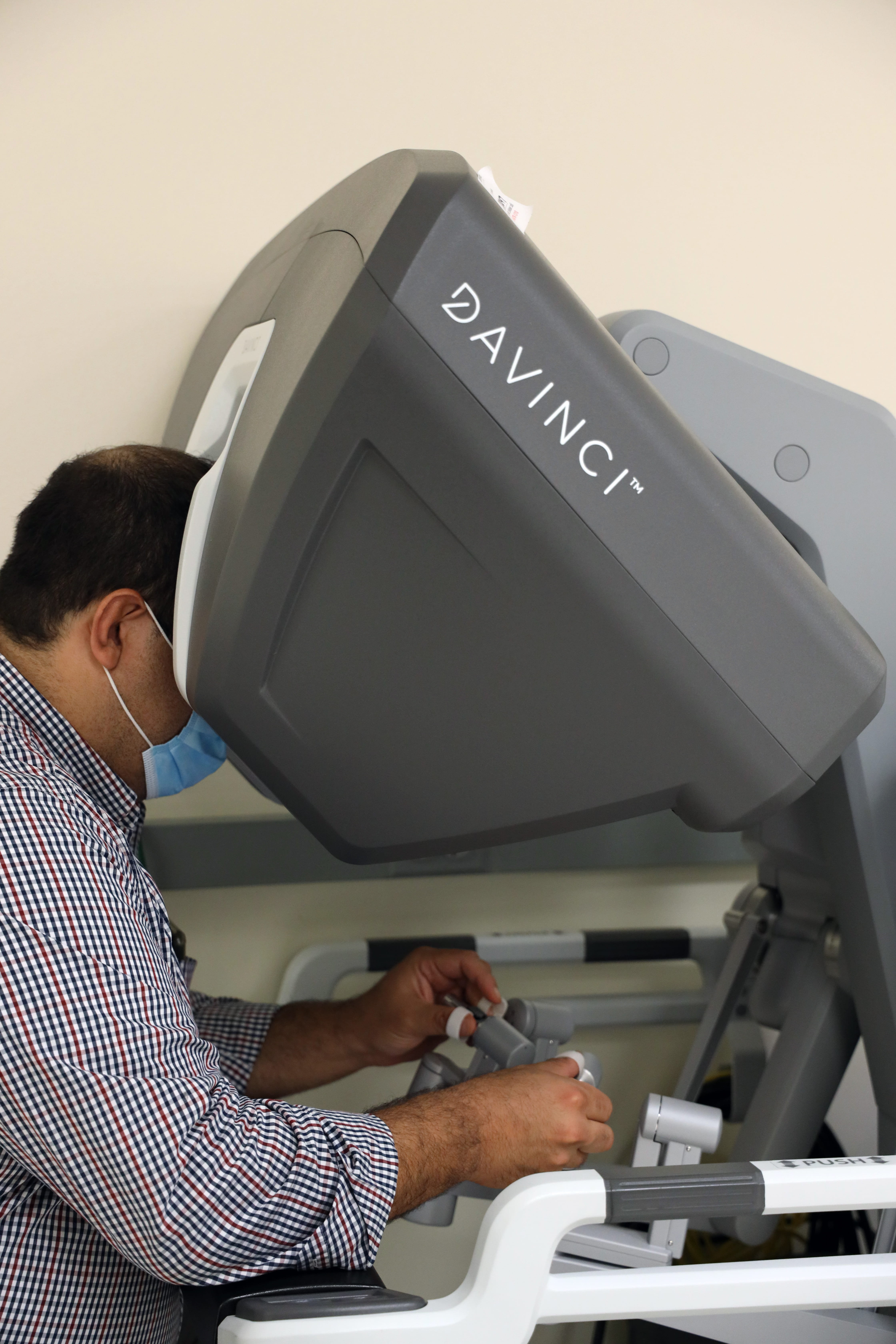
“When we think of trainees, we often think of students, residents and fellows. But as practicing physicians, we like to think of ourselves as continually learning,” Awad says. “Learning doesn’t stop when you finish your formal training. New approaches, devices, techniques and technology are always emerging. When it affords the opportunity for better outcomes, less morbidity and faster returns to work, we want to safely incorporate this technology for our patients.”

